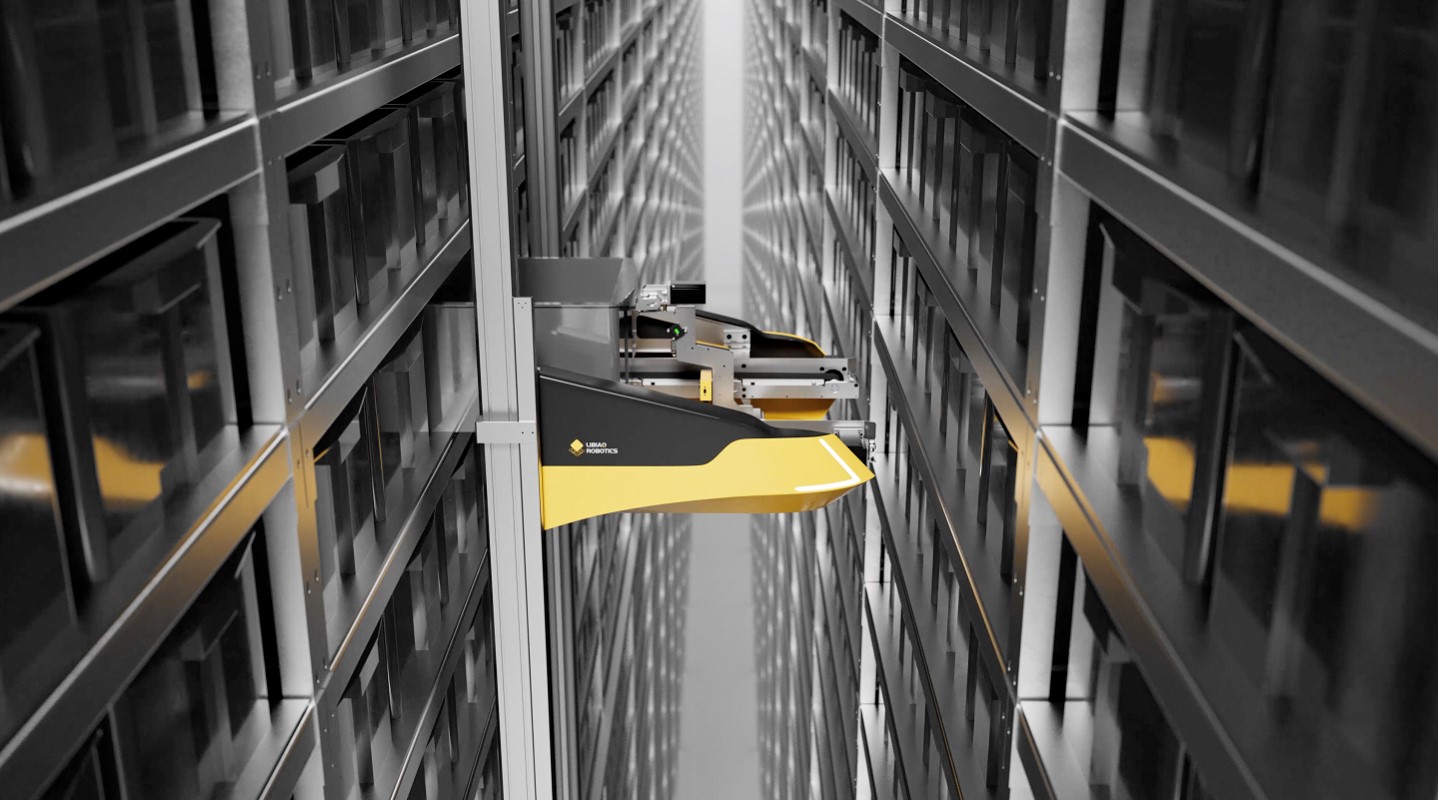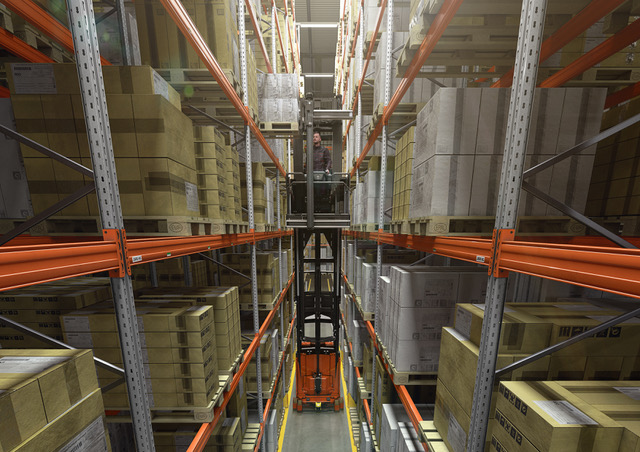Launched in 1989 as an export freight forwarder, impressive and consistent organic growth combined with several strategic acquisitions has seen Hemisphere Freight Services Ltd evolve in to one of the UK’s largest, independently owned supply chain solutions specialists.
To keep pace with demand for the extensive range of logistics services it provides, Hemisphere recently announced the addition to its property portfolio of a 243,000 sq ft new-build warehouse facility within the Port One Logistics Park development, which is located just outside Ipswich.
And, following a competitive tender process, Toyota Material Handling was awarded the contract to oversee the design and build of the new unit’s racking and storage scheme from start to finish. In addition, Toyota has supplied the fleet of forklift trucks that operates within the new unit and will provide ongoing truck service and maintenance support to ensure that the machines always deliver optimum performance.
“The fact that Toyota could provide a turnkey solution that included supplying a full range of materials handling equipment, designing and constructing our racking system and project managing the installation through the build cycle was very attractive,” explains Hemisphere Freight Services Ltd Director, Craig Perrin. “The term ‘one-stop-shop’ is something of a cliché, but Toyota really did take care of everything. Working with a single-source supplier has several distinct advantages. For example, having one point of contact allowed us to reduce the amount of management time we had to dedicate to the project considerably.
“But, perhaps more importantly, dealing with a ‘turnkey’ partner for the handling equipment and the racking instead of two independent companies, means there is no possibility of an ‘issue’ arising because of a disagreement or misunderstanding between the racking and forklift providers during the fit-out phase of the installation or, indeed, at some point in the future,” Perrin adds.
After consulting with the company’s operations management to get a full understanding of the client’s needs, Toyota decided that a very narrow aisle (VNA) racking configuration – which achieves maximum storage space by simply narrowing the facility’s aisle widths – was clearly the best option for Hemisphere Freight. Toyota was able to design a VNA racking cube that provided a staggering 1800 more pallet locations than any of the other schemes put forward during the tender process by cutting out ‘dead space’ and carefully considering the ideal location within the racking scheme for lift trucks to move between aisles.
“Essentially, Hemisphere Freight wanted a storage system that maximises the new site’s pallet capacity and delivers the flexibility required to cope with the different weight, size and shape of the products that its clients need to store,” says Chris Tarrant, Toyota Material Handling UK’s Storage Solutions Specialist.
The new racking scheme not only meets the company’s present requirements, but it has been designed to be compatible with any significant changes in the nature of the goods stored at the facility without the need to make potentially costly and time-consuming remedial work. Each individual bay on every level within the storage scheme is 3.6 metres wide. This allows an infinitely variable combination of standard-size or Euro-size pallets to be put away within each bay and means costly ‘dead space’ is eliminated throughout the store.
“The design and installation of pallet racking is a significant part of Toyota’s business, but unlike companies whose sole focus is on racking and shelving systems we are not motivated by the need to sell the biggest quantity of metal or make money from the future supply of spare rack parts or racking repairs,” explains Tarrant. “Our single incentive is to deliver the optimum solution for the client. This means getting the ideal number of aisles and the most appropriate aisle widths for the type of products stored and the materials handling equipment deployed and ensuring transfer aisles are sited in the best place,” he adds.
The VNA racking is served by a fleet of Toyota Vector VCE150A articulated man-up combi trucks. Part of Toyota’s extensive range of very narrow aisle warehouse machines, the Vector VCE150A model’s clear open fronted design makes it an ideal machine for pallet handling in high-density warehouses and distribution centres, such as Hemisphere Freight’s new facility.
The forklift’s unique articulated steering system provides excellent manoeuvrability both outside the aisles and, importantly, during the aisle transfer process. In fact, the VCE150A’s ability to pick up and turn pallets in areas where space is highly restricted means it is the only VNA model on the market capable of transferring pallets between the aisles at Hemisphere Freight and therefore the only VNA forklift that enables the extra pallet space delivered by Toyota’s clever racking scheme to be utilised to maximum effect.
Fleet management
The VNA truck fleet is connected to Toyota’s I_Site fleet management tool. I-Site uses Telematics technology to enable each truck to become a communications device capable of transmitting valuable data regarding a forklift’s performance to Hemisphere Freight Services’ management team. For example, any underutilised vehicles or unused capacity will be flagged up so trucks can be swapped around to improve their usage rate and ensure maximum efficiency.
The solution also includes the Toyota Navigation System. This links to Hemisphere Freight’s WMS and provides semi-automated positioning for trucks, maximizing speed to location within the operation and reducing errors in the location of pallets. Hemisphere Freight Services takes its environmental responsibilities very seriously. The company is committed to reducing carbon in the supply chain and, with all the electricity needed to operate the site generated by PV solar panel roofing, the new warehouse will be one of the first carbon neutral logistics facilities in East Anglia.
This meant that energy efficiency was a significant influence on the choice of lift trucks for the new store. Powered by lithium-ion batteries Toyota’s VCE150A delivers class-leading energy performance. The trucks can operate at high intensity for up to five hours on a single hour’s recharge and the power supply can be topped up by simply plugging in to any of the compatible chargers.
This more efficient charging regime means there is no requirement for battery change and removes the need for a dedicated battery charging room. The key benefits that come with this are the freeing up of additional storage space and the environmental benefits of zero emissions and reduced CO2 emissions especially combined with solar energy.
Perrin sums up: “Opening this additional warehouse will enable us to store more products, fulfil orders more efficiently and generally take the headache of logistics away from our clients by providing first-class infrastructure and logistics services that are backed up by a brilliant team of logistics experts. We are determined to play an active part in the growth of the warehousing sector and help drive industry standards up for the benefit of existing and future customers.”
read more
Industry View: Getting Full Value from Very Narrow Aisle Layouts






